Disclosure: This article contains affiliate links. We may earn a commission from purchases at no extra cost to you, which helps our travel content.
There's something almost spiritual about the way water connects us to our most primal selves. As someone who's spent decades studying the cultural threads that bind us through food, I've found that water—like cuisine—has its own regional dialects. And nowhere speaks this language more eloquently than the Mamanuca Islands of Fiji. Last summer, María and I escaped Valencia's heat for what was meant to be a culinary exploration but quickly transformed into an unexpected aquatic odyssey. These 20 volcanic islands, scattered like emerald jewels across the azure South Pacific, became our playground for seven unforgettable days. What follows isn't just a guide to luxury water adventures, but an invitation to discover how the rhythms of these waters might awaken something dormant within you, just as they did for this 61-year-old chef who found himself laughing like a schoolboy in the warm Fijian sea.
Surfing the Cloud Break: Facing Fiji's Legendary Wave
The locals call it Nakoro Nakalou—the Village of the Gods—and standing before the infamous Cloud Break, I understood why. This legendary left-hand reef break, about 2.5 kilometers from Tavarua Island, has humbled professional surfers for decades.
I'm no pro—far from it. The last time I'd been on a surfboard was during a brief stint in San Diego in the '90s when I was researching coastal Mexican cuisine. But María, ever the adventurer, had booked us a private coaching session through our resort.
'Tranquilo, Donald,' our instructor Seru laughed as I gripped my soft-top surfboard with white knuckles. 'We start small today.'
Thankfully, the Mamanuca archipelago offers waves for every level. While Cloud Break loomed in the distance like some mythological beast, we began in the gentler waters near Namotu Island. The warm Pacific embraced us like an old friend, and by afternoon, I'd managed to stand up on several modest waves, each ride bringing back the rush of youth.
What struck me most was how surfing here differs from California or even Spain's northern coast. The water's perfect temperature—no wetsuit needed—and crystalline clarity meant I could spot tropical fish darting beneath my board during wipeouts. There's something profoundly connecting about riding waves above a living coral ecosystem.
Later, watching the professionals tackle Cloud Break from the safety of our boat, cold Fiji Gold beer in hand, I felt a deep appreciation for this intersection of human courage and natural power—not unlike the bold flavors that have defined my culinary career.

💡 Pro Tips
- Book surf lessons through your resort at least 2 days in advance
- Morning sessions (7-10am) offer the cleanest conditions
- Consider a private boat charter to explore multiple breaks in one day
Diving the Supermarket: A Underwater Symphony of Color
If music has movements, then diving the site known as 'The Supermarket' is Fiji's grandest underwater symphony. Located near Mana Island, this dive site earned its peculiar name from the feeding sessions that draw dozens of reef sharks into an elegant, swirling dance.
'In my kitchen, I orchestrate flavors,' I told our divemaster Vili as we prepared our gear. 'Here, you orchestrate encounters with sharks.'
He smiled knowingly, helping María adjust her dive computer, a luxury we'd splurged on before this trip. 'Chef, today you taste adventure, yes?'
Descending into the blue, I felt the familiar pressure equalization in my ears—a sensation not unlike the altitude adjustments when I'd traveled through the Andes researching Peruvian-Spanish fusion years ago. But here, at 18 meters deep, the world transformed into something otherworldly.
The feeding itself wasn't the blood-frenzy that shark documentaries might lead you to expect. Rather, it was controlled, almost ceremonial. Blacktip reef sharks, sleek and purposeful, moved with the precision of well-trained kitchen staff during a Saturday night rush. Whitetip reef sharks patrolled the periphery, while the occasional bull shark—the executive chef of this underwater brigade—made commanding appearances that quickened my pulse.
What surprised me most was the musicality of it all. The bubbles from our regulators, the distant clicking of unseen marine life, the soft woosh of shark tails—it created an ambient soundtrack to this ballet of predators. I found myself mentally composing a dish that might capture this experience: perhaps something with the sharp citrus notes of yuzu cutting through rich, dark flavors of a reduced stock, unexpected yet harmonious.
When we surfaced an hour later, María and I exchanged wordless glances that said everything. Some experiences transcend language, whether it's the perfect bite of food or swimming among creatures that have remained unchanged for millions of years.
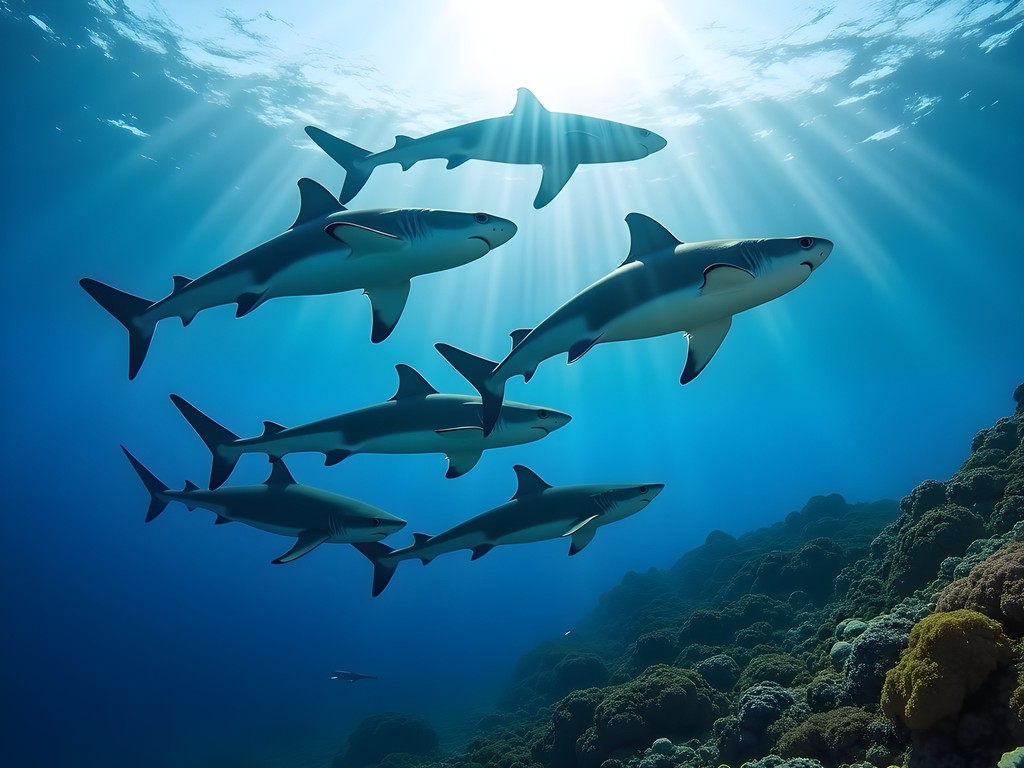
💡 Pro Tips
- Book dive trips that depart after 9am to avoid morning seasickness
- Bring an underwater camera with red filter for true color capture
- Stay calm and maintain neutral buoyancy when sharks approach
Kitesurfing Between Islands: Dancing with Trade Winds
The Spanish sailors who first navigated these waters in the 16th century understood something fundamental about the South Pacific: here, the wind tells stories. As a student of colonial culinary history, I've always been fascinated by how these maritime routes shaped the global exchange of ingredients. But standing on Mana Island's windward beach, kite harness secured around my waist, I was about to experience these historic trade winds in a far more immediate way.
'You have good balance from your chef days, yes?' asked Temo, our kitesurfing instructor, as he demonstrated the control bar technique. 'Kitchen, kitesurf—both need balance!'
He wasn't wrong. The years of navigating busy kitchens had given me a center of gravity that served me surprisingly well as I learned to harness the wind's power. María, watching from shore, captured video of my ungraceful first attempts—footage that our adult children back in Texas would surely find hilarious.
By our third day of lessons, something clicked. The kite above me became less an adversary and more a partner. The sensation of gliding across the water's surface, powered only by wind that had traveled thousands of miles across open ocean, was intoxicating. We progressed to 'island hopping'—kitesurfing from Mana to nearby uninhabited sandbars and back again.
During one particularly magical afternoon session, we kitesurfed alongside a pod of spinner dolphins. Their playful leaps seemed to mirror our own joy, a cross-species celebration of movement and freedom. The Fijian sun, lower now in the western sky, cast everything in a golden light that reminded me of the saffron-infused broths I'd perfected back in my restaurant days.
'¡Qué maravilla!' María called as we returned to shore, salt-crusted and exhausted. That night, over a dinner of kokoda (Fijian ceviche) that rivaled any I'd made professionally, we agreed that kitesurfing had given us a perspective on the Mamanucas that few tourists experience—a bird's-eye view combined with the intimate connection to the water below.
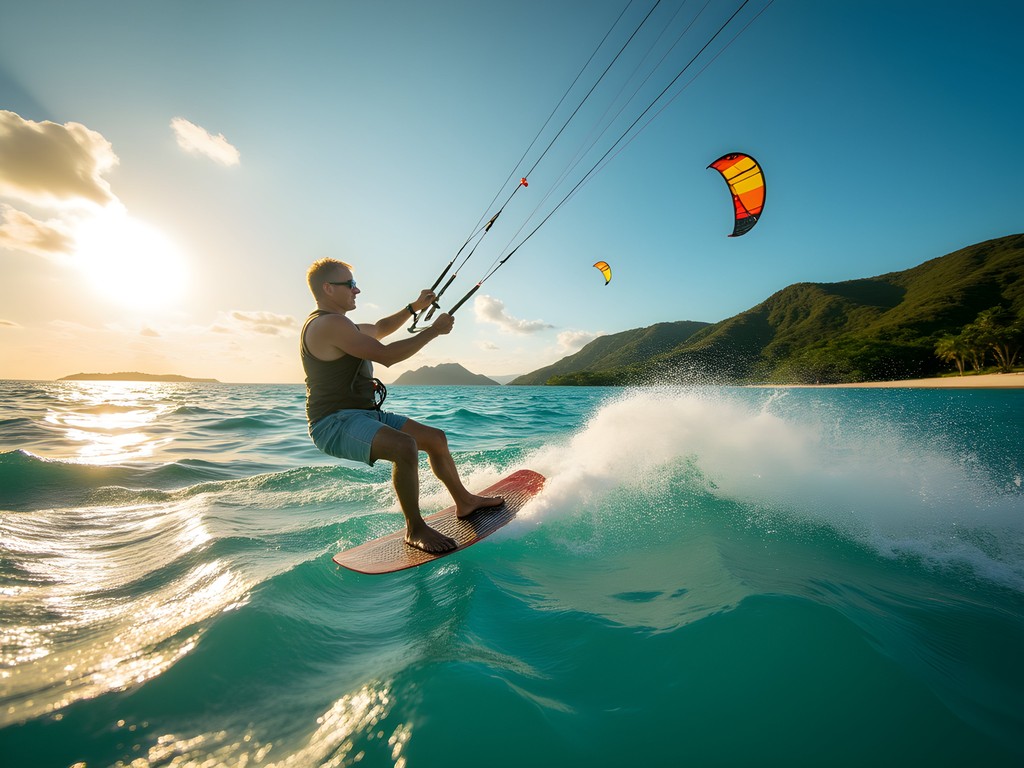
💡 Pro Tips
- Take a multi-day kitesurfing course rather than a single lesson
- Wear a rash guard and board shorts rather than a swimsuit
- The best wind conditions are typically between 1-4pm
Swimming with Manta Rays: A Sacred Dance
In Fijian culture, manta rays are considered messengers between our world and the spirit realm. When our resort's marine biologist mentioned a chance to swim with these creatures near the channel between Navini and Tokoriki islands, I felt drawn to the experience in a way that transcended typical tourist curiosity.
'The mantas here can reach up to four meters across,' explained Lani, our guide, as our small boat cut through the morning mist. 'But they're gentle giants—plankton eaters with no stinger.'
We anchored in what seemed like unremarkable waters, but Lani assured us we were at a 'cleaning station'—a coral bommie where smaller fish remove parasites from larger marine creatures, including mantas. Within minutes of entering the water, dark shadows appeared in the distance.
Nothing prepares you for your first manta encounter. These creatures move with a grace that defies their massive size, their wing-like pectoral fins undulating in a rhythm that feels ancient and knowing. As they approached, I instinctively reached for María's hand, both of us suspended in silent awe.
The mantas performed barrel rolls beneath us, their white undersides flashing as they filtered plankton from the water. Their movements reminded me of the flamenco dancers in Valencia—powerful yet precise, each motion carrying cultural memory and purpose.
I've spent decades studying how food connects us to tradition, but watching these creatures—virtually unchanged for millions of years—I felt a different kind of connection to the past. My underwater camera captured images, but no photograph could convey the profound sense of being acknowledged by these intelligent beings as they swooped within inches of us.
Afterward, back on the boat, no one spoke for several minutes. The experience had rendered words inadequate. Lani finally broke the silence: 'In Fiji, we say that if a manta ray chooses to swim with you, good fortune will follow.'
Whether or not the legend holds true, I can attest that something fundamental shifts when you share the water with these magnificent creatures. It's a humbling reminder of our small place in the grand tapestry of life—a lesson I've also found at the heart of every authentic culinary tradition I've studied.
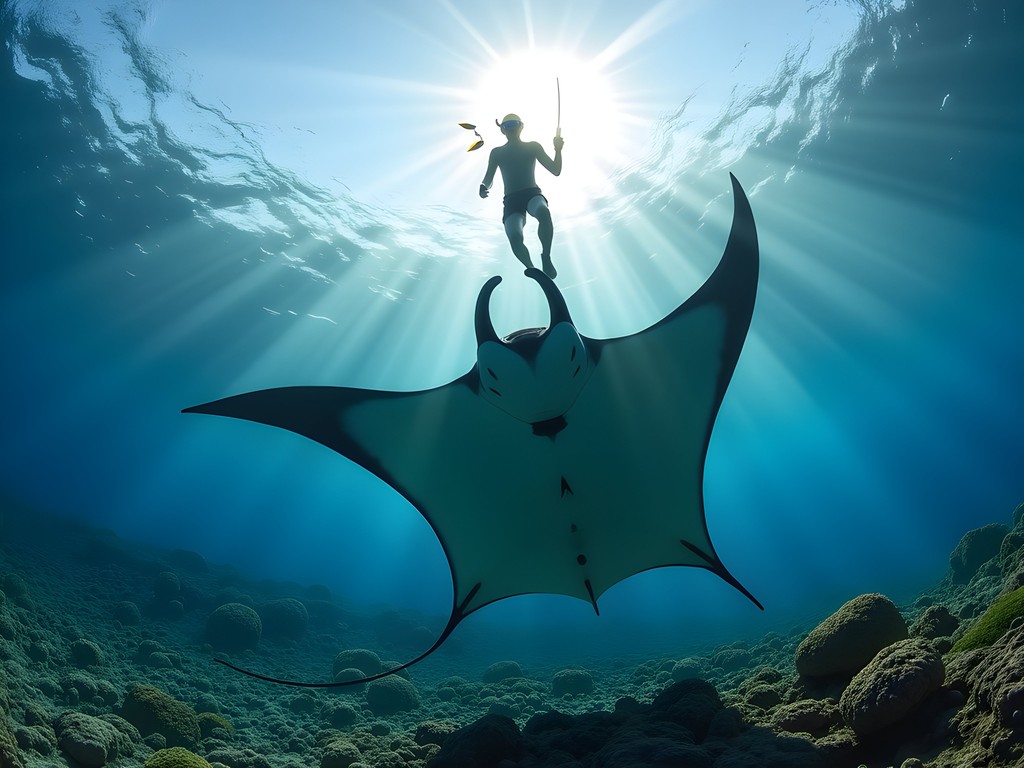
💡 Pro Tips
- Early morning (6-8am) offers the best visibility for manta encounters
- Practice slow, controlled breathing to extend your time underwater
- Keep at least 3 meters distance and never touch the mantas
Jet Ski Safari: Island-Hopping in Style
There's something delightfully contradictory about exploring a pristine paradise on a machine that breaks the tropical silence with its mechanical roar. Yet, as María and I mounted our jet skis at Musket Cove Resort's marina, I couldn't deny the childlike excitement bubbling up within me.
'Chef Donald, you ready for some speed?' grinned Josaia, our guide, revving his engine playfully.
'En mi cocina, siempre rápido,' I replied. 'In my kitchen, always fast!'
Our 'Jet Ski Safari' promised visits to five islands in a single day—a water-based road trip through some of the Mamanucas' most spectacular scenery. As we accelerated away from the resort, the sensation was exhilarating—salt spray in my face, the vibration of the engine, and that peculiar feeling of hovering just above the water's surface rather than cutting through it.
Our first stop was Monuriki Island, where Tom Hanks filmed 'Cast Away.' Pulling our jet skis onto the pristine beach, I marveled at how a place so embedded in popular culture could still feel undiscovered. The coconut palms swayed in the trade winds as Josaia prepared fresh fruit on a portable cutting board—a chef's presentation that earned my professional approval.
Throughout the day, we island-hopped across waters that shifted from turquoise to indigo and back again. At Yanuya Island, we met with village elders and participated in a brief kava ceremony—a cultural touchstone that reminded me of how beverages, like food, serve as cultural ambassadors across time.
The waterproof dry bag I'd brought proved invaluable, keeping our valuables safe during the occasional wave-jumping that Josaia encouraged. 'Not bad for an old chef!' he laughed as I landed particularly dramatically, sending water spraying in all directions.
The perspective from a jet ski is unique—you're close enough to the water to feel intimately connected to it, yet moving fast enough to cover distances that would take hours by boat. We circumnavigated entire islands, explored hidden coves inaccessible to larger vessels, and at one point, cut our engines completely to float in silence as a sea turtle surfaced nearby, regarding us with ancient eyes.
As the afternoon waned and we made our way back to Musket Cove, I reflected on how this modern adventure had given us insights into the archipelago's geography that early explorers would have spent weeks discovering. There's a certain privilege in that—one that comes with responsibility to protect these waters for generations to come.

💡 Pro Tips
- Wear polarized sunglasses to better see reefs and marine life while riding
- Apply waterproof sunscreen to the backs of your hands and knees—often-forgotten spots
- Bring small bills for village visits and local crafts
Underwater Sea Bob Adventure: Modern Mermaids
The first time I saw a Sea Bob—a handheld underwater propulsion device that looks like something from a James Bond film—I was skeptical. At sixty-one, I've developed a healthy wariness of gadgets that promise to revolutionize experiences. But María, ever the early adopter, had already booked our underwater 'flight' before I could voice my reservations.
'Trust me, cariño,' she said, squeezing my hand as we walked down to Castaway Island's activity center. 'You'll feel like Superman.'
After a brief training session on the beach with our instructor Mere, we waded into the lagoon, devices in hand. The Sea Bob is remarkably intuitive—squeeze the trigger and you accelerate, release it to slow down. Simple depth controls allow you to dive or rise with minimal effort.
My first underwater 'flight' was nothing short of revelatory. Without the constraints of scuba gear or the limitations of breath when snorkeling, I found myself moving through Castaway's house reef with unprecedented freedom. The Sea Bob pulled me effortlessly through the water, allowing me to cover distances and depths that would have been exhausting otherwise.
We followed Mere through underwater archways, over expanses of staghorn coral, and alongside dropoffs where the reef gave way to deeper blue. Schools of chromis parted before us like living curtains, while curious batfish approached to investigate these strange new creatures invading their domain.
What struck me most was how the experience changed my relationship with the underwater world. Rather than being a visitor—face down at the surface or encumbered by tanks—I moved more like a marine creature myself. There was a fluidity, an integration that felt almost transformative.
At one point, we cut our engines and drifted in a coral garden as Mere pointed out a perfectly camouflaged octopus. In the silence, watching this master of disguise shift patterns across its skin, I thought about the parallels to cooking—how the best dishes often involve transformation and revelation, the unveiling of flavors that were always present but hidden.
Later, comparing notes with María over sunset cocktails, we agreed that the Sea Bob experience had given us a new perspective on marine exploration. 'It's like the difference between walking through a market and dancing through it,' I offered, trying to articulate the sensation.
She nodded, understanding perfectly. 'Next time, we bring the underwater action camera to capture it,' she said, already planning ahead. As always, mi esposa thinks of everything.

💡 Pro Tips
- Book the morning session when marine life is most active
- Opt for the guided tour rather than solo rental for your first experience
- Wear a thin wetsuit or rash guard to prevent chafing from the device
Parasailing Over the Archipelago: A Chef's Aerial Perspective
Throughout my culinary career, I've often told young chefs that understanding a dish requires seeing it from multiple angles—considering texture, aroma, temperature, and presentation simultaneously. Perhaps that's why parasailing above the Mamanuca archipelago felt strangely familiar despite being utterly new: it offered a comprehensive perspective impossible to grasp from sea level.
'It's completely safe, Mr. Sanchez,' assured Tomasi, our parasailing operator at Plantation Island Resort, as he secured our harnesses. 'Just like floating on air.'
María and I opted for tandem flight, strapped side-by-side in a seated position. As the boat accelerated and our parachute caught the wind, we lifted off with surprising gentleness—no stomach-dropping sensation, just a gradual ascension until we dangled approximately 100 meters above the Fijian waters.
The silence was the first surprise. Once aloft, the boat engine's roar faded, replaced by nothing but wind and occasional bursts of our own laughter. The second revelation was the color palette below us—a masterpiece of blues I'd never imagined existed, from pale turquoise over sand flats to deep cobalt above channels, all framed by the white lace of breaking waves on outer reefs.
'¡Mira los colores!' María gasped, squeezing my hand as we soared higher. 'It's like God's own palette!'
From our aerial vantage, the interconnectedness of the ecosystem became strikingly apparent. Channels cut through reefs like veins, mangroves fringed certain shorelines like protective embraces, and the tidal patterns created visible currents that swirled between islands. I found myself thinking of how these same waterways had guided ancient Polynesian navigators and later European explorers, shaping the cultural exchanges that fascinate me professionally.
We spotted a manta ray's dark shadow against a sandy bottom, a small reef shark patrolling its territory, and most dramatically, a pod of dolphins cutting through the water with purposeful grace. The polarized sunglasses I'd brought specifically for this trip proved invaluable, cutting glare and enhancing visibility of the marine life below.
Our fifteen minutes aloft passed all too quickly, and soon Tomasi was reeling us back toward the boat with practiced precision. As our feet touched down on the deck, I realized I was grinning like a schoolboy.
'You look twenty years younger,' María laughed, adjusting her windblown hair.
'I feel it,' I replied truthfully. There's something about seeing a place from above that contextualizes your own smallness while simultaneously expanding your understanding—a paradoxical gift that, like the best culinary experiences, leaves you both satisfied and hungry for more.

💡 Pro Tips
- Go early in the day when winds are typically calmer
- Wear secure water shoes that won't fall off during landing
- Request the 'dip package' where they lower you to touch the water during flight
Final Thoughts
As our seaplane lifted off from Malolo Island on our final day, banking sharply to give us one last sweeping view of the Mamanucas, I found myself already mentally composing this narrative—trying to capture how these waters had worked their magic on us. Like the best dishes in my repertoire, Fiji doesn't just satisfy one craving but creates new ones you didn't know you had. The islands taught this old chef that adventure isn't the exclusive domain of the young, but rather available to anyone willing to surrender to the moment. Whether you're surfing gentle breaks at 61, coming face-to-face with manta rays, or soaring above it all strapped to a parachute, the Mamanucas offer a symphony of experiences that engage all senses. María and I came seeking culinary inspiration but departed with something far more valuable: the reminder that life—like cooking—is about constant reinvention and the courage to try new flavors. ¡Hasta la próxima, Fiji! Until next time, these islands of water and wonder will call to us like a favorite recipe, demanding to be experienced again.
✨ Key Takeaways
- The Mamanuca Islands offer water adventures for all skill levels, from beginner to advanced
- Luxury resorts can arrange all activities, often with private guides for a more personalized experience
- The combination of adventure and cultural experiences creates a more meaningful connection to Fiji
📋 Practical Information
Best Time to Visit
May through October (Fiji's dry season)
Budget Estimate
$800-1,200 per day for luxury accommodations and activities
Recommended Duration
7-10 days
Difficulty Level
Intermediate

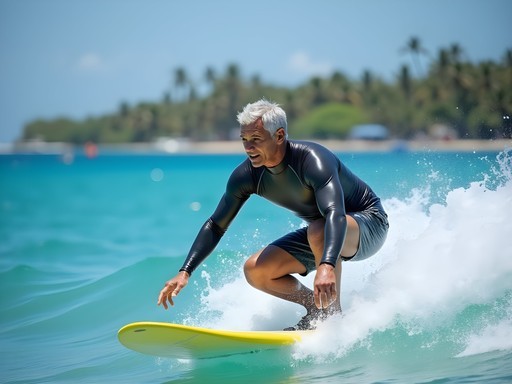


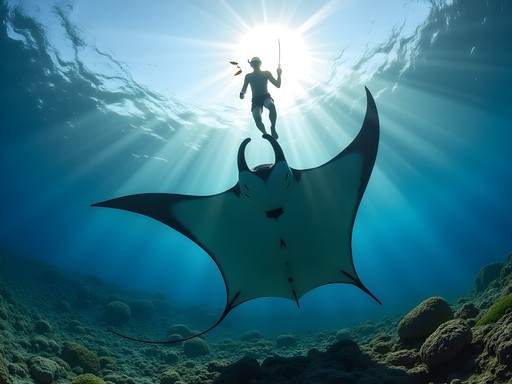




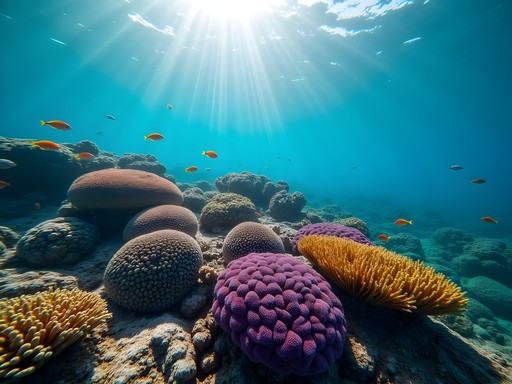
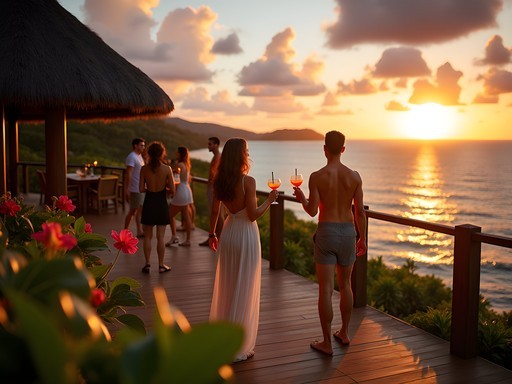






Comments
wanderperson
This looks AMAZING! 😍 Heading to Fiji in March and definitely want to try some of these. How difficult was the kitesurfing for beginners? Also wondering what underwater camera you used for those stunning dive shots?
Donald Sanchez
For kitesurfing, I'd recommend at least one lesson if you're a beginner - the winds can be unpredictable. Most resorts offer starter sessions in protected lagoons. For underwater photography, I used my underwater camera with a red filter for those deeper dives at Supermarket. The visibility there is incredible!
wanderperson
Perfect, thanks! I'll look into booking some beginner lessons. Can't wait to see those manta rays!
Gregory Boyd
Great write-up, Donald! I spent three weeks island-hopping around the Mamanucas last year, and your piece brought back incredible memories. The Supermarket dive site is truly spectacular - I counted 7 different shark species on a single dive! For anyone planning a trip, I'd recommend staying on Mana Island as a base - more affordable than the luxury resorts but still gives you access to most activities. The kitesurfing between Mana and Matamanoa during the trade wind season (May-October) was the highlight for me. One tip: book your seaplane transfers well in advance as they fill up quickly during peak season.
Donald Sanchez
Thanks Gregory! Mana Island is a great suggestion - I wish I'd spent more time there. And you're absolutely right about booking seaplanes early. Did you get a chance to swim with the mantas?
Gregory Boyd
I did! Caught them at Manta Ray passage near Tokoriki. Magical experience - they came so close I could've touched them (though obviously didn't). The local guide explained their cultural significance which added another dimension to the experience.
wavefan
Cloud Break has been on my bucket list forever! Did you find it as scary as people say?
Donald Sanchez
It's definitely intimidating! The local guides were essential - I wouldn't have attempted it solo. The wave deserves all the respect it gets.
wavefan
Thanks for the honesty! Maybe I'll start with something easier when I visit next year 😅
Taylor Moreau
Brilliant piece, Donald. Having visited the Mamanucas annually for the past decade, I'd add that timing is everything. November-December offers the perfect balance of weather conditions for these activities - particularly for kitesurfing between islands, when the trade winds are consistent but not overwhelming. I found the kitesurfing school on Mana Island particularly professional, with equipment suitable for all skill levels. The cultural context you've added to these adventures gives them a depth often missing in standard travel guides. Looking forward to your next aquatic exploration.
starqueen
Is swimming with manta rays safe for beginners who aren't strong swimmers? I'm planning a trip with my family next year.
oceanpro
Totally safe! They provide life jackets and the guides are super attentive. My wife barely swims and she had no problems. Just make sure to book the morning tours - better visibility.
starqueen
That's so reassuring, thanks! Will definitely book the morning tour.
oceanpro
Just got back from diving the Supermarket last month and it was everything Donald described and more. The shark feeding was incredible - we counted 37 reef sharks during our dive! One tip I'd add is to bring your own dive camera since the rental options are limited and pricey. The visibility was amazing in September, easily 30+ meters on most days.
bluephotographer
That Cloud Break wave looks insane! Definitely on my bucket list but not sure I have the skills yet.
Taylor Moreau
It's genuinely as challenging as Donald describes. I attempted it last year and it humbled me completely - 30+ years of surfing experience and I still felt like a beginner. Worth the effort though!
bluephotographer
Thanks for the honesty! Maybe I'll work up to it with some of the easier breaks first.
backpackclimber
This looks amazing! How many days would you recommend staying to try most of these activities? Is it expensive to get between islands?
Donald Sanchez
I'd recommend at least 5-7 days to really experience the best activities without rushing. Island hopping can be done via resort boats or water taxis - not cheap but worth every penny. Many resorts also offer activity packages that include transportation.
backpackclimber
Thanks Donald! Just booked for next spring. Can't wait!
Sage Dixon
Donald, this brings back such vivid memories! I tackled Cloud Break last year and it was equal parts terrifying and exhilarating. That wave has a personality all its own - one minute it's giving you the ride of your life, the next it's trying to swallow you whole. For anyone considering it, I'd recommend spending at least a few days with the local instructors before attempting it. They know exactly how to read the conditions. The kitesurfing between islands was another highlight - feeling the trade winds catch your kite while island-hopping is something I'll never forget. Used my travel wetsuit which was perfect for the water temperature there. Great write-up capturing the spirit of the Mamanucas!
backpackclimber
Are there any options for complete beginners? Cloud Break sounds way above my skill level but I'd love to try something in the area.
Sage Dixon
Absolutely! Plenty of sheltered bays for beginners. Castaway Island has great intro lessons for surfing smaller waves. The Supermarket dive site is also accessible for novice divers with instruction. Just tell the resorts your experience level and they'll set you up right!
oceanzone
Those manta rays look incredible! Been on my bucket list for years.
Sage Dixon
Trust me, it's even better in person! The way they glide through the water is almost hypnotic. I remember just floating there in complete awe.
oceanzone
Did you need special training to swim with them or can beginners do it too?
Venture X
Premium card with 2X miles, $300 travel credit, Priority Pass